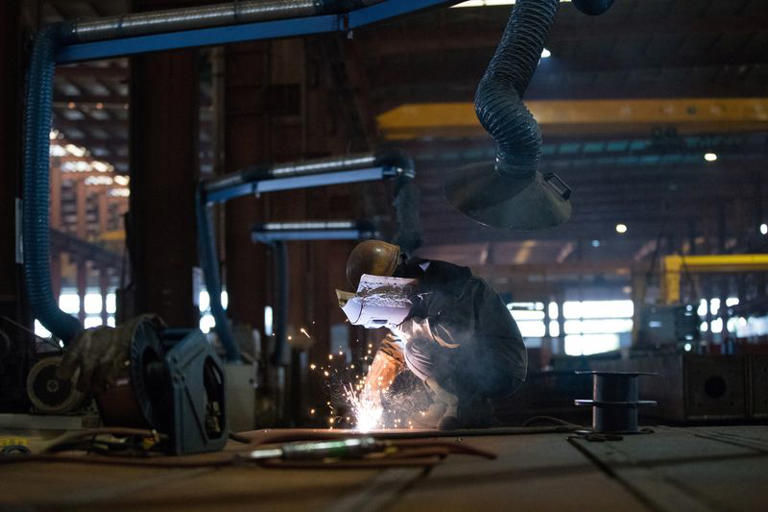China’s manufacturing sector is experiencing significant strain, as recent sentiment surveys reveal troubling trends that suggest the sector is entering a challenging period, described as a “cruel summer.” These surveys indicate that factory owners are contending with declining demand, raising concerns about the potential impact on economic growth for the remainder of 2024.
Survey Insights
A recent private-sector survey conducted by Caixin and S&P Global, which includes responses from 650 private and state-owned manufacturers, has highlighted a sharp deterioration in manufacturing conditions. The Caixin/S&P Global Manufacturing Purchasing Managers’ Index (PMI) for July dropped to 49.8. This figure falls below the critical 50-point threshold, which separates expansion from contraction, and represents the lowest reading since October of the previous year. This decline was unexpected, as analysts had projected a PMI of 51.5.
The survey underscores a significant decrease in new orders, marking the first drop in this metric in a year. Respondents attributed this decline to weakened demand and tighter client budgets. Further analysis reveals that the drop in new orders was most pronounced in sectors related to investment and intermediate goods. Conversely, the consumer goods sector managed to record slight expansion during July.
Official PMI Data and Broader Economic Indicators
The official PMI data, released on Wednesday, corroborates the private-sector findings, suggesting soft economic momentum within the manufacturing sector. According to Citi Research, industrial production growth for July is expected to have slowed to 4.8% year-on-year, compared to 5.3% in June. Additionally, factory-gate prices are likely to have continued their decline, reflecting ongoing deflationary pressures in the economy.
The survey highlights persistent issues such as insufficient domestic demand and low market optimism. To counteract these challenges, some manufacturers have lowered their selling prices to stimulate sales amid heightened competition. Employment levels have remained relatively stable, with the rate of job losses unchanged from June and continuing to reflect a contractionary environment.
Economic Context and Government Response
China’s broader economic landscape reflects missed growth targets for the second quarter and ongoing deflationary trends. Retail sales and imports have significantly underperformed compared to industrial output and exports, further compounding economic concerns. In response to these challenges, the Chinese Communist Party has recognized the severe headwinds facing the economy, emphasizing the need for new growth drivers to replace traditional ones.
The government’s response includes measures to stimulate consumption. Recently, China announced that approximately 150 billion yuan ($20.74 billion) from a 1 trillion yuan issuance of ultra-long special treasury bonds will be allocated to subsidize the replacement of old appliances, cars, electronic bicycles, and other consumer goods. This initiative aims to boost domestic demand and mitigate the adverse effects of current economic conditions.
Export Orders and Trade Challenges
Despite the overall decline in new orders, export orders showed an increase in July. However, the growth rate for export orders has moderated compared to June, highlighting the ongoing difficulties in the global trade environment. China’s trade growth faces several challenges, including high geopolitical risks, protectionist trade policies, supply chain disruptions, and rising shipping fees.
Conclusion
The manufacturing sector in China is navigating a turbulent period marked by reduced demand and weak economic signals. The recent survey data and official PMI reports suggest that these challenges could persist, potentially impacting overall economic growth for the remainder of 2024. In light of these developments, China’s government has introduced policy measures aimed at stimulating consumption and stabilizing growth. For investors and market observers, these trends highlight the importance of closely monitoring economic indicators and government responses to assess the broader implications for China’s economy. The situation underscores the complexity of navigating economic uncertainties and the need for strategic adjustments in response to evolving market conditions.
